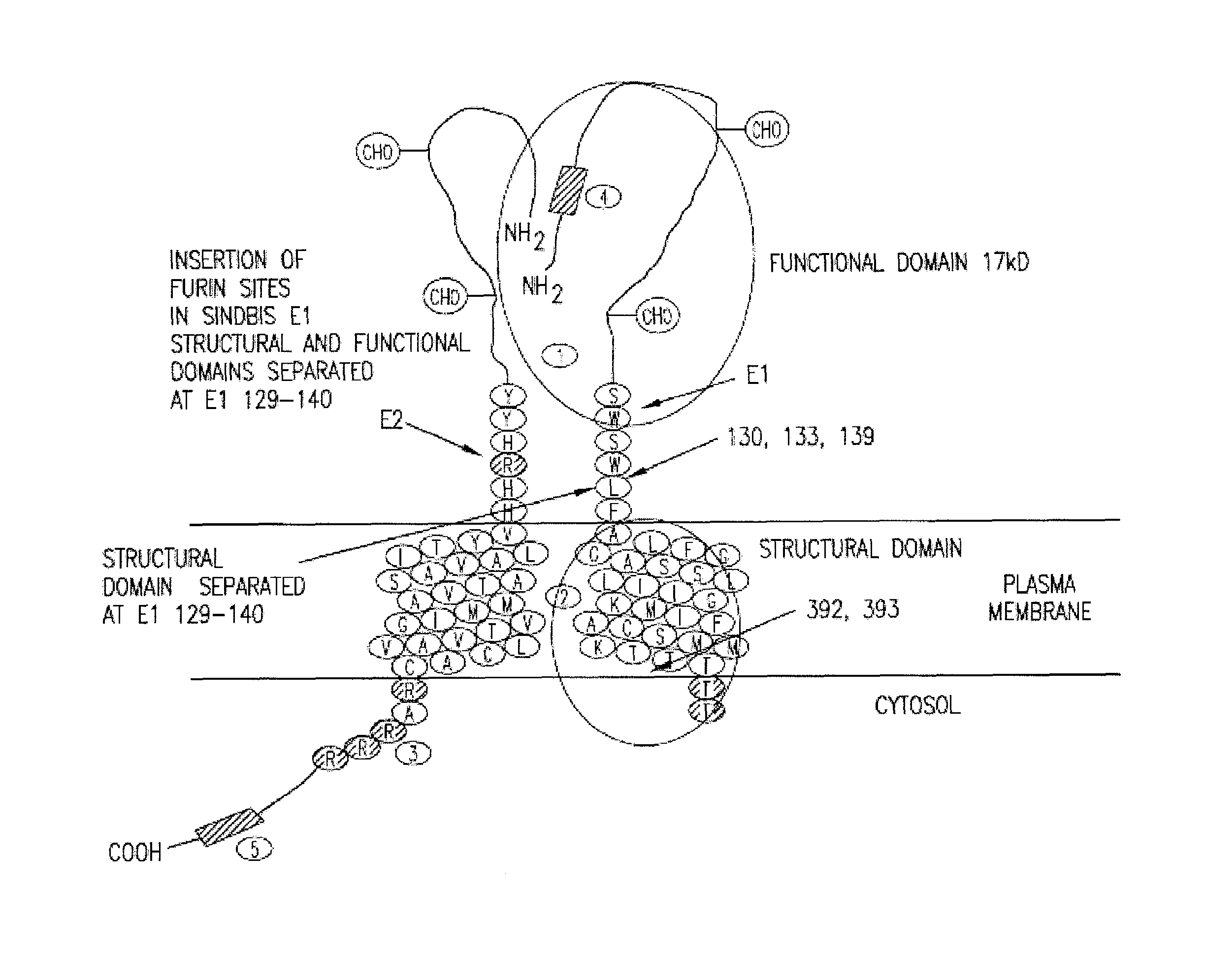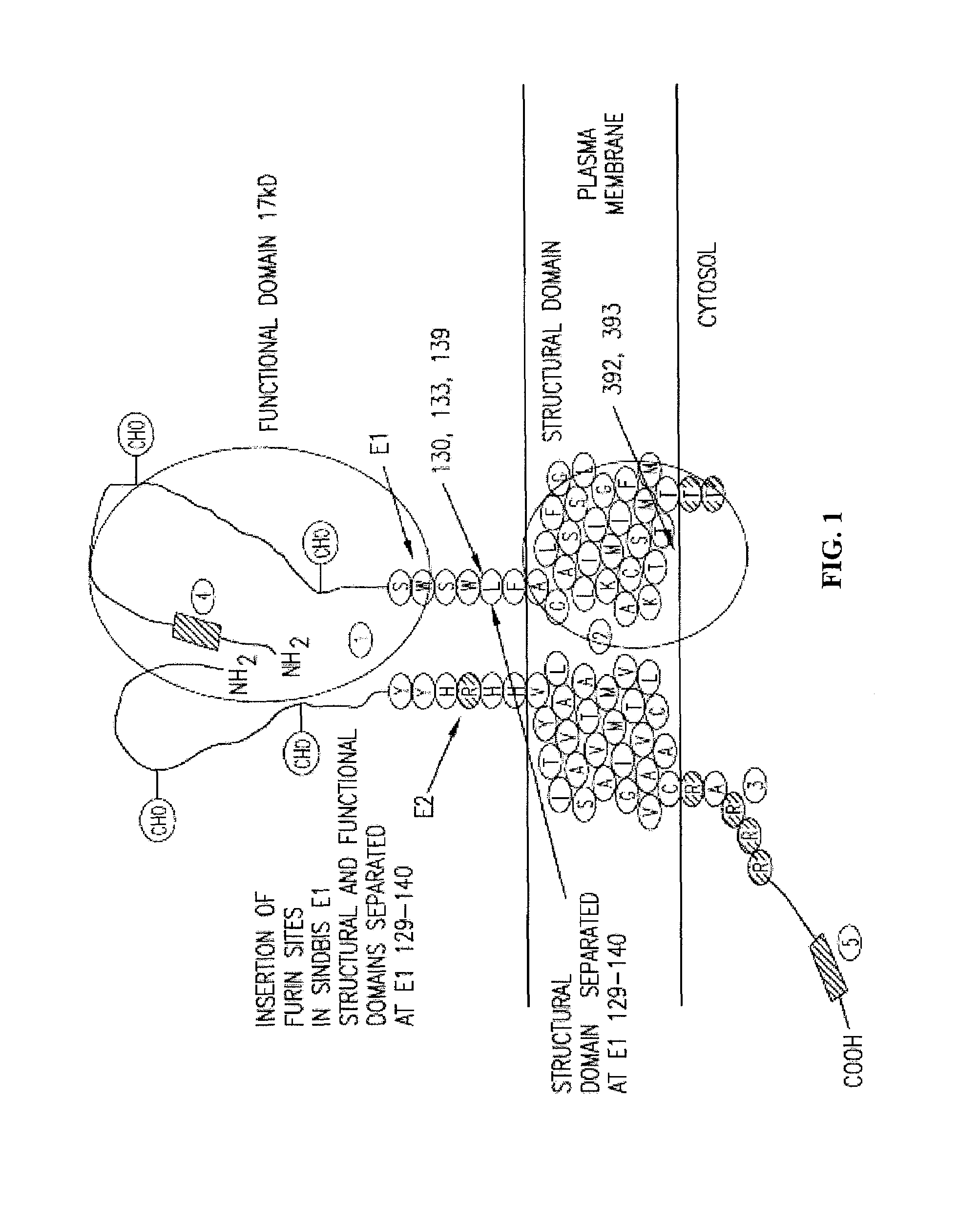Insertion of furin protease cleavage sites in membrane proteins and uses thereof
a furin protease and membrane protein technology, applied in the field of study and use of membrane glycoproteins, can solve the problems of protein ineffective use as subunit viral vaccines, difficult if not impossible structural analysis of these proteins, and difficulty in maintaining native conformation of these proteins, so as to prevent the loss of native conformation
- Summary
- Abstract
- Description
- Claims
- Application Information
AI Technical Summary
Benefits of technology
Problems solved by technology
Method used
Image
Examples
example 1
Release of Protein Domain in Native Conformation After Furin Cleavage
[0034]To release the first domain of the E1 glycoprotein of Sindbis virus from the membrane protein complex, a furin protease cleavage site was inserted in the region separating the functional domain from the structural domain of the protein. This was done using the Quick-Change™ technique of mutagenesis (Stratagene) in a full length cDNA clone of the virus RNA (Rice et al., 1987).
[0035]The primers used to produce these mutations are shown in Table 1. Mutations were made to place the furin sensitive sequence at positions E1-130 (RXRK, SEQ ID NO.2), E1-133 (KXKR, SEQ ID NO.3) and E1-139 (RXRR, SEQ ID NO.1) using the naturally occurring amino acid sequences when possible. Selection of these sites was based on research which demonstrates that these sites would be exposed on the protein surface and thus would be available for protease cleavage (Phinney et al., 2000; Phinney and Brown, 2000).
[0036]It is predicted that t...
example 2
Replication of Viruses Carrying the Furin Insertion
[0042]The effects of furin protease site insertions on the production of infectious virus are shown in Table 2. Table 2 shows that mutants containing the furin cleavage site produce very low levels of infectious virus when their RNA is transfected into the furin protease containing BHK-21 cells.
[0043]In contrast, these mutants produce wild-type (Y420) amounts of virus when transfected into CHO-RPE40 cells that do not have furin activity. For the mutants F-130 and F-133, this result shows that the presence of the furin cleavage site at these locations does not prevent correct folding E1 as it is incorporated into infectious virus. Infectious viruses production is inhibited by 5-6 orders of magnitude in the BHK cell because furin has cut the folded E1 protein into two separate domains. The mutant F-139 shows a similar inhibition of growth in BHK cells even though significant cleavage of E1 does not take place. In the case of the 139 s...
PUM
| Property | Measurement | Unit |
|---|---|---|
| Ectodomain | aaaaa | aaaaa |
Abstract
Description
Claims
Application Information
 Login to View More
Login to View More - R&D
- Intellectual Property
- Life Sciences
- Materials
- Tech Scout
- Unparalleled Data Quality
- Higher Quality Content
- 60% Fewer Hallucinations
Browse by: Latest US Patents, China's latest patents, Technical Efficacy Thesaurus, Application Domain, Technology Topic, Popular Technical Reports.
© 2025 PatSnap. All rights reserved.Legal|Privacy policy|Modern Slavery Act Transparency Statement|Sitemap|About US| Contact US: help@patsnap.com



